Лютий 23, 2023
Валентина Гурова, Суспільне Миколаїв: «Над нами летіли білі парашути — на них спускались снаряди»
Перші зйомки в зоні бойових дій кореспондентки Суспільне Миколаїв Валентини Гурової були на Донеччині у 2016-му — їздила із місцевими волонтерами знімати історії захисників і тих, хто мешкає поблизу фронту. В межах серії блогів журналістів Суспільного, які висвітлюють бойові дії та обстріли українських міст, — розповідь про роботу під час війни Валентини Гурової.
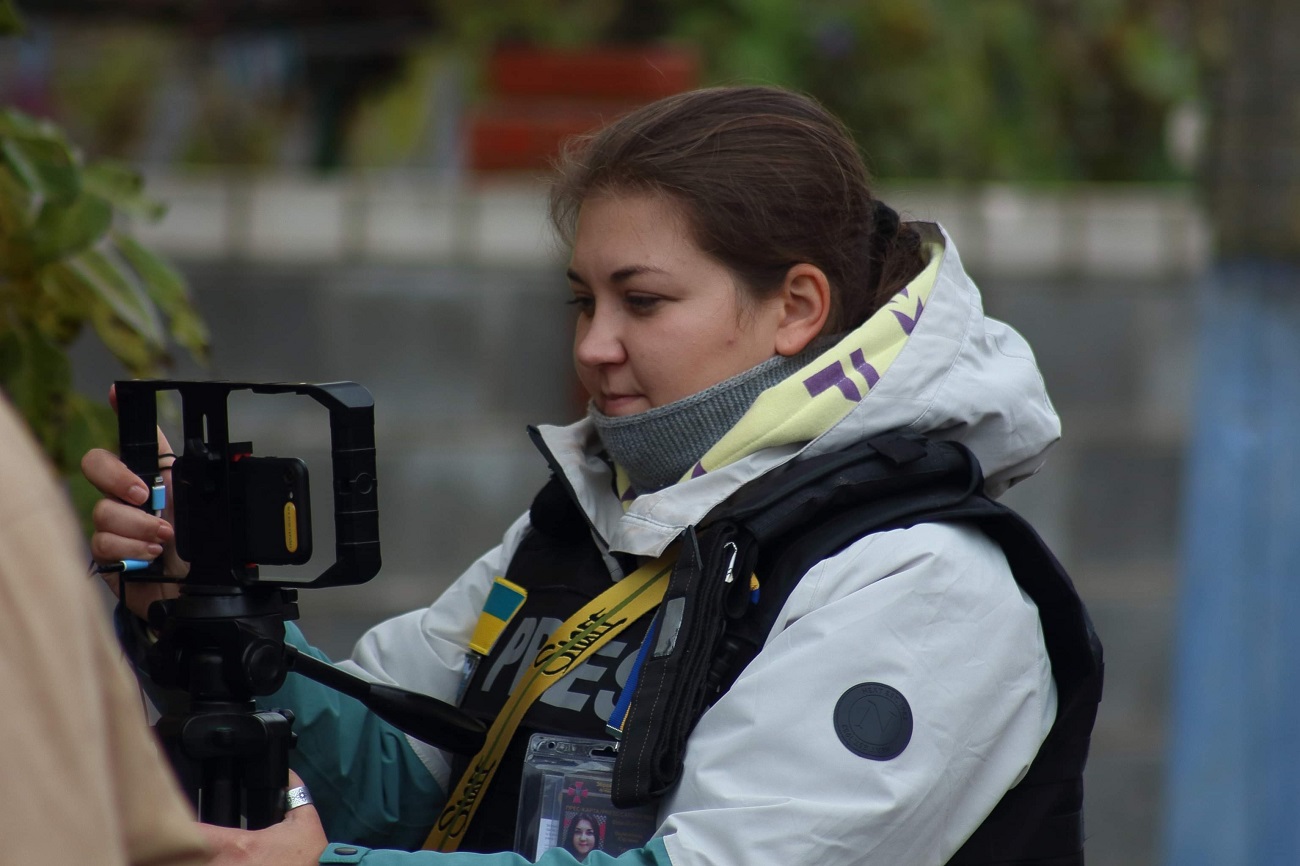
Читайте також: Дарина Коломієць, Суспільне: «Ввечері лягала на підлогу і ридала, а вранці вставала, одягаючи маску непорушності»
 Відчуття — неймовірна лють, непорозуміння і питання «за що»
Відчуття — неймовірна лють, непорозуміння і питання «за що»
Під час повномасштабної війни перше, що довелося знімати, — наслідки обстрілу «градами» спального мікрорайону у Миколаєві, району, де сама народилась і живу досі. Пошкоджені лікарні, школи, дитсадки, житлові будинки, згорілі автомобілі.
Рідні були постійно на звʼязку та нервували, місто перебувало під постійними обстрілами, навіть без оголошень повітряної тривоги. Пізніше почались дозволені виїзди на позиції військовослужбовців на перших лініях фронту на Херсонському напрямку. Збір з вечора, підготовка обладнання: телефони, світло, дроти, павербанки тощо. Вранці — тактичний одяг, бронежилет, каска, аптечка, виїзд на місце зустрічі з пресофіцером бригади. Ранкова кава і «погнали». Дорогою зазвичай «на колінках» планування роботи на локації. По приїзді обговорення з військовими і обіцянка бути обережною та слухатись наказів. Журналістське везіння — це коли підрозділ артилерії їде «вже» на бойове завдання і командир говорить, давайте з нами. Протягом одного дня на позиціях зазвичай є можливість відзняти кілька матеріалів. Повернення додому — відписування сюжетів. Наступного дня нові теми та зйомки.
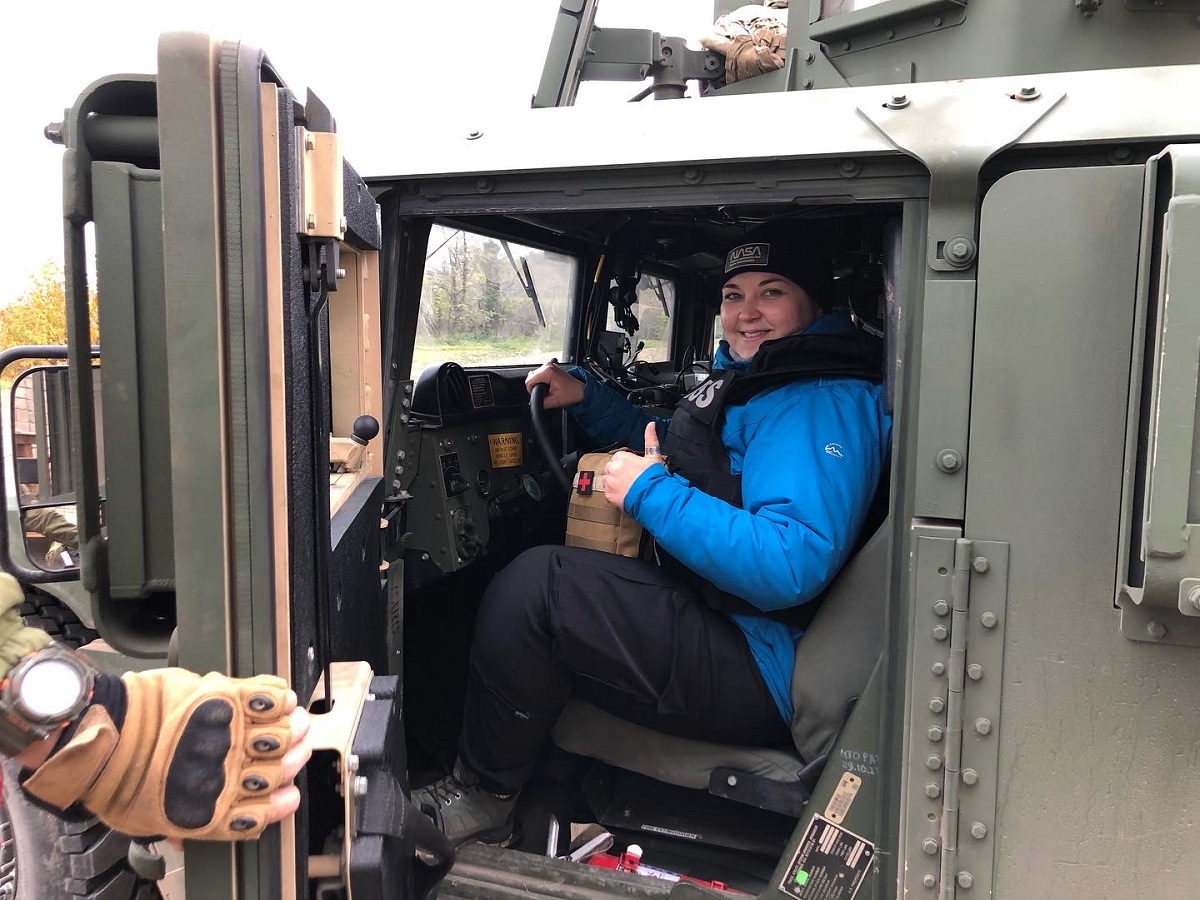
 Основне правило під час роботи в зоні бойових дій — власна безпека
Основне правило під час роботи в зоні бойових дій — власна безпека
Про мій виїзд обов’язково повинна знати моя редакція, треба тримати зв’язок із колегами. Не обговорюється й амуніція — зручний та правильно одягнений бронік, каска й аптечка. Принциповим було проходження курсів з такмеду, аби трохи розумітись у наданні невідкладної допомоги. Робота на деокупованих територіях — великий відсоток сьогодення. Часто доводиться бути психологом, спілкуючись із людьми, які пережили місяці окупації, важко не пропускати такі історії через себе та зберегти нормальний емоційний стан.
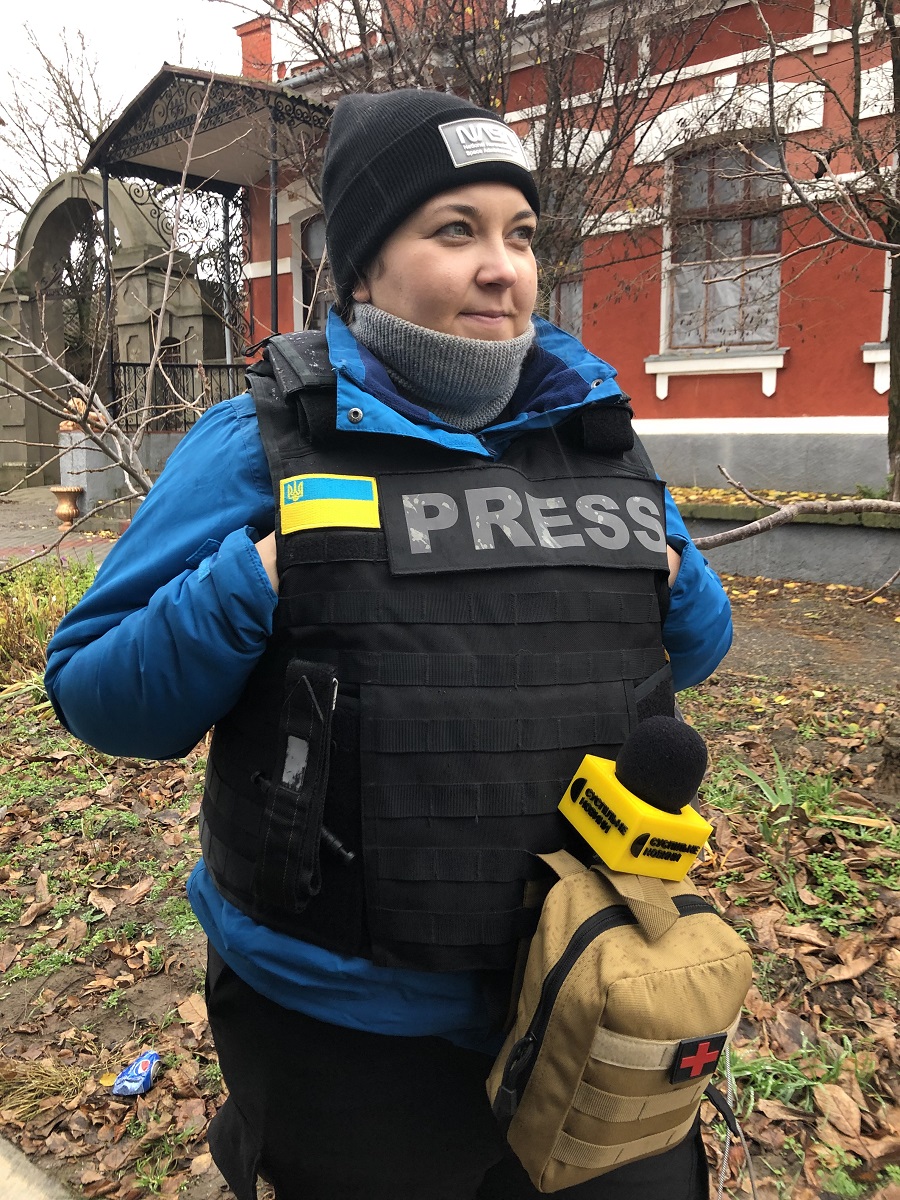
Після звільнення Херсона від окупантів фронт відсунувся, Миколаїв став відносно безпечнішим. Тож нині містяни продовжують відновлювати житло, до міста повертається бізнес, пусті кілька місяців тому вулиці знов багатолюдні. Через ворожий обстріл ще у квітні зруйнували водогін, і в миколаївців досі немає якісної води, та до цього вже пристосувались. Досі доводиться знімати й писати про наслідки обстрілів, відновлення регіону, часто їздити на Херсонщину, де люди потерпають від росіян.
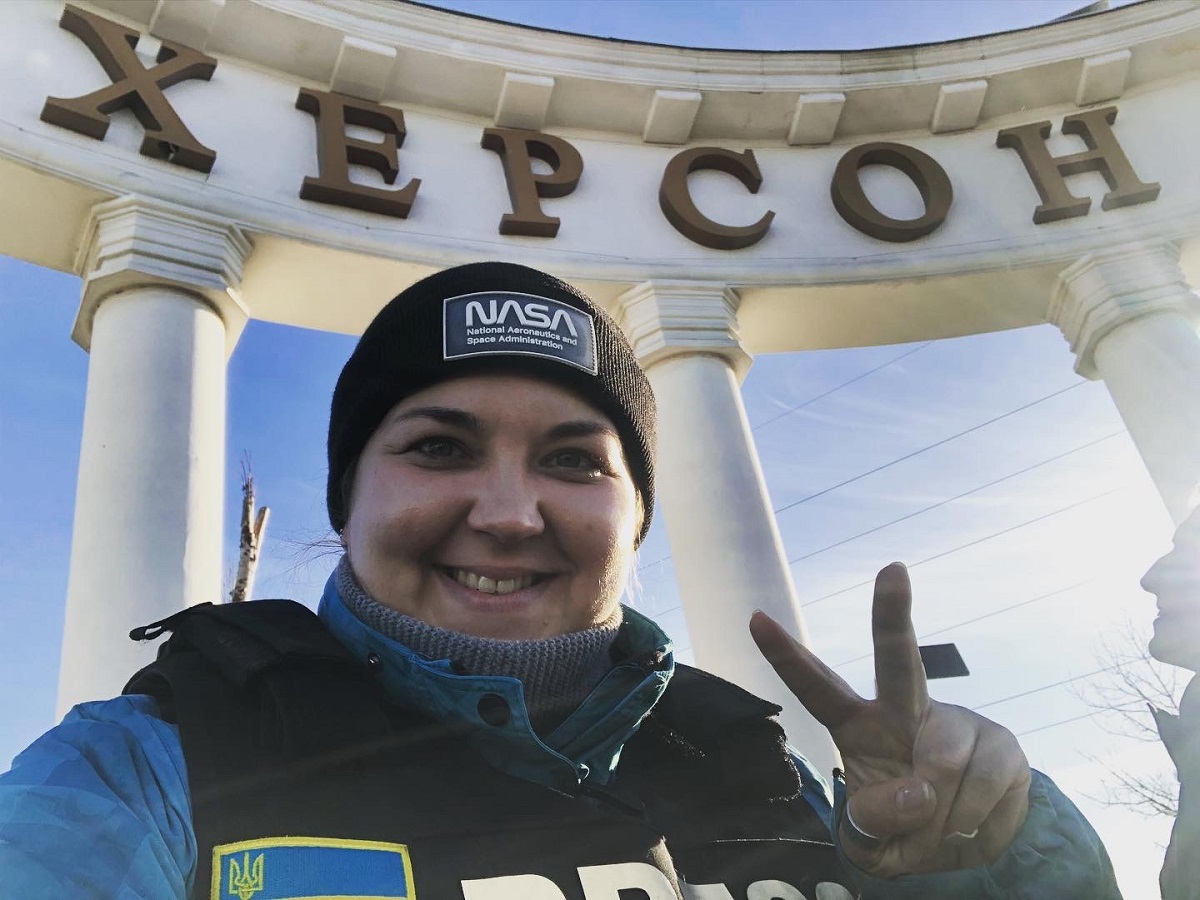
Особливо запам’яталось 21 березня, день коли ми з операторкою приїхали знімати матеріал про поховання шістьох військовослужбовців з різних підрозділів. Усі чекали, коли ритуальний транспорт завантажать і колона поїде на кладовище за містом. Пролунало кілька вибухів, через хвилину один з присутніх військових закричав «повітря!»
 Над нами летіли білі парашути — на них спускались снаряди
Над нами летіли білі парашути — на них спускались снаряди
Всі почали бігти в різні сторони й ховатися під будинками. Ще кілька секунд — і дуже потужні вибухи. Після цього колона таки сформувалась і рушила на кладовище. Захисників ховали під звуки вибухів десь на околицях міста, за кількасот метрів щось димілось. Перше, що ми з операторкою й водієм обговорили, коли вийшли з машини, — в яку з виритих могил стрибати, якщо прилетить поруч.
Кожен день від 24 лютого 2022 року і досі починається з думок, що незабаром настане ранок без війни, ранок, коли ми підемо відбудовувати міста і жити. Зараз — це основна мотивація. Найбільше, що запам’ятовується, — люди. Військові та волонтери. Я б хотіла запам’ятати кожного і кожну, з ким познайомила війна. Не зможу забути того, що довелось бачити під час роботи в різних місцях Миколаївщини та Херсонщини, і це не дасть ніколи забути, якою ціною нам дається наша Незалежність.
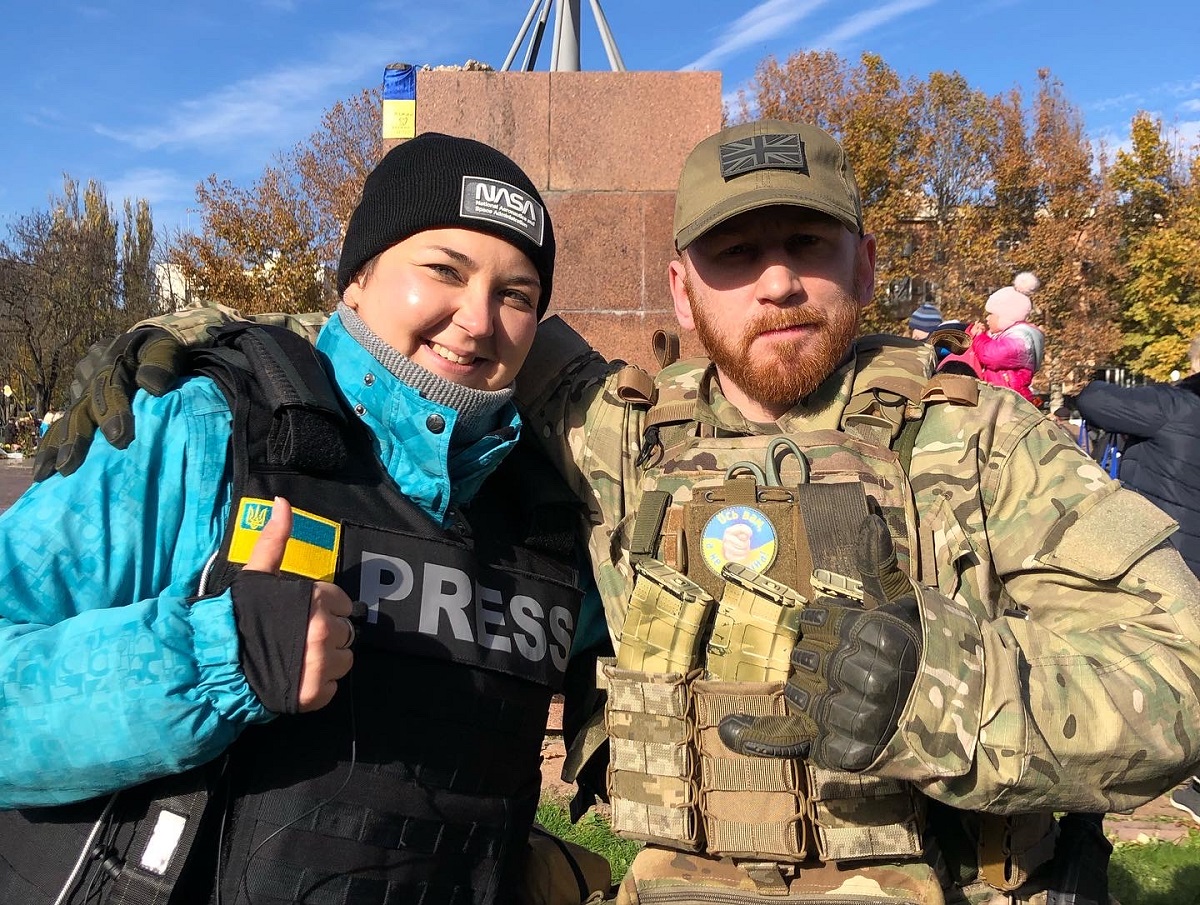
Хто хоче стати військовим журналістом, має цього навчатись, адже дуже складно ним стати, коли ти цивільний журналіст, хоч і робиш десятки матеріалів про військових, АТО та ООС. Головне пам’ятати, що жоден матеріал, жодне відео чи фото не коштують життя твого й того військового, який тебе супроводжує, тож власна безпека має бути на першому місці.
Фото — з особистого архіву Валентини Гурової
Матеріал підготувала до публікації Юлія Муконіна
Valentyna Hurova, Suspilne Mykolaiv: “White parachutes were flying above us - shells were descending on them”
Valentyna Hurova, a correspondent for Suspilne Mykolaiv, made her first filming in the combat zone in 2016 in Donetsk region, when she traveled with local volunteers to film stories of defenders and those living near the frontline. As part of a series of blogs by Suspilne journalists who cover the fighting and shelling of Ukrainian cities, here is a story about Valentyna Hurova's work during the war.

 Feelings - incredible rage, misunderstanding and the question “why”
Feelings - incredible rage, misunderstanding and the question “why”
During the full-scale war, the first thing I had to film was the aftermath of the shelling of a residential neighborhood in Mykolaiv, the neighborhood where I was born and still live. Hospitals, schools, kindergartens, residential buildings, and burned cars were damaged.
Relatives were constantly in touch and nervous, the city was under constant shelling, even without air raid warnings. Later, the authorized visits to the positions of soldiers on the front lines in the Kherson sector began. Gathering in the evening, preparing equipment: phones, lights, wires, power banks, etc. In the morning - tactical clothing, bulletproof vest, helmet, first aid kit, departure to the meeting place with the brigade's press officer. Morning coffee and off we go. On the way, we usually plan the work at the location on our knees. Upon arrival, a discussion with the military and a promise to be careful and obey orders. Journalistic luck is when an artillery unit is on its way to a combat mission and the commander says, “Come with us.” During one day at the positions, there is usually an opportunity to shoot several stories. When we return home, we write up the stories. The next day, new topics and shootings.

 The main rule when working in a war zone is your own safety
The main rule when working in a war zone is your own safety
My editorial office must know about my departure, and I must keep in touch with my colleagues. Ammunition is also a non-negotiable: comfortable and properly dressed bulletproof vest, helmet and first aid kit. It was crucial to take a course in tactical medicine to understand a little bit about providing emergency care. Working in the de-occupied territories is a big part of our work today. Often you have to be a psychologist, communicating with people who have lived through months of occupation, it is difficult not to let such stories pass through you and maintain a normal emotional state.

After the liberation of Kherson from the occupiers, the frontline moved back, and Mykolaiv became relatively safer. So now the citizens continue to rebuild their homes, businesses are returning to the city, and the streets that were empty a few months ago are crowded again. The water supply system was destroyed by enemy shelling back in April, and Mykolaiv residents still don't have quality water, but they have adapted to this. I still have to film and write about the consequences of the shelling, the restoration of the region, and often travel to Kherson region, where people are suffering from the russians.

I especially remember 21 March, the day my cameraman and I came to shoot a story about the burial of six soldiers from different units. Everyone was waiting for the funeral transport to be loaded and the convoy to go to the cemetery outside the city. There were several explosions, and a minute later one of the soldiers present shouted “air!”
 White parachutes were flying above us - shells were descending on them
White parachutes were flying above us - shells were descending on them
Everyone began to run in different directions and hide under buildings. A few seconds later, there were very powerful explosions. After that, the column finally formed and moved to the cemetery. The defenders were being buried to the sound of explosions somewhere on the outskirts of the city, and something was smoking a few hundred meters away. The first thing the cameraman and the driver and I discussed when we got out of the car was which of the dug graves to jump into if the enemy came along.
Every day since 24 February 2022, and until now, we have started with the thought that soon there will be a morning without war, a morning when we will go to rebuild our cities and live. This is the main motivation now. The most memorable thing is people. The military and volunteers. I would like to remember each and every person I met during the war. I will never forget what I saw while working in different places in Mykolaiv and Kherson regions, and it will never let me forget the price of our independence.

Anyone who wants to become a military journalist must learn to do so, because it is very difficult to become one when you are a civilian journalist, even though you make dozens of stories about the military, ATO and JFO. The main thing to remember is that no material, video or photo is worth your life or the life of the soldier who accompanies you, so your own safety must come first.
Photo from the personal archive of Valentyna Hurova
The material was prepared for publication by Yuliia Mukonina


